Publications
"Adverse Impacts of Mental Health Needs Assessment on Jail Outcomes: Evidence from Transition Age Youth and Adults",
Forthcoming. Journal of Human Resources
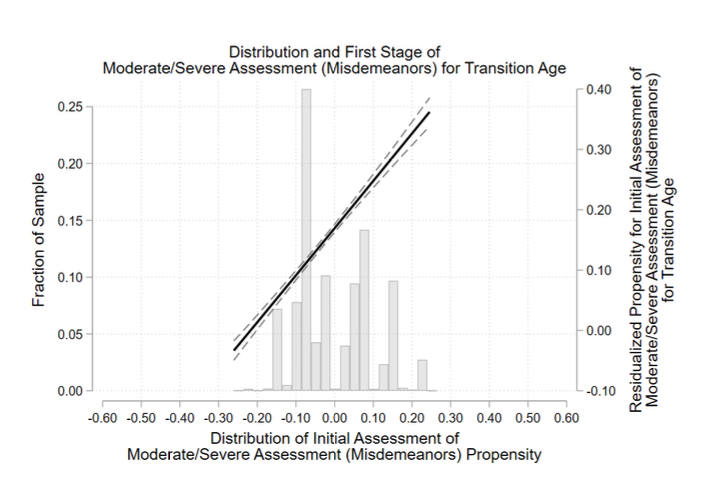
"Did Craigslist’s Erotic Services Reduce Female Homicide and Rapes?",
Forthcoming. Journal of Human Resources.
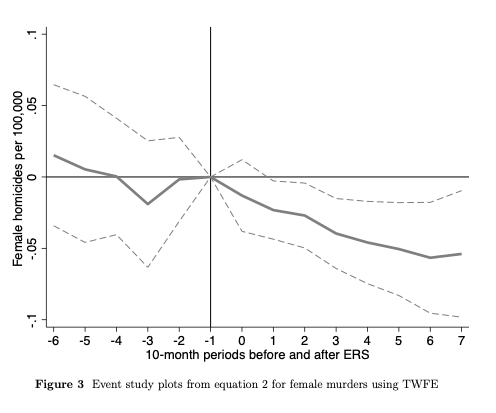
"The Long-term Effects of the Rwanda Genocide on Child Work",
Economic Development and Cultural Change
"Children on the Move: Progressive Redistribution of Humanitarian Cash Transfers among Refugees",
Forthcoming. Journal of Development Economics
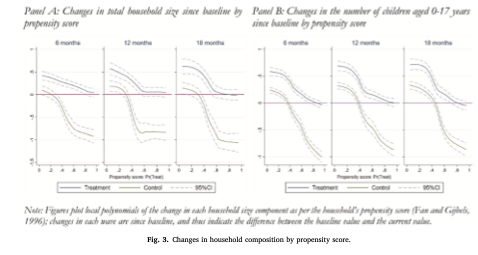
Forthcoming. Scientific Reports.
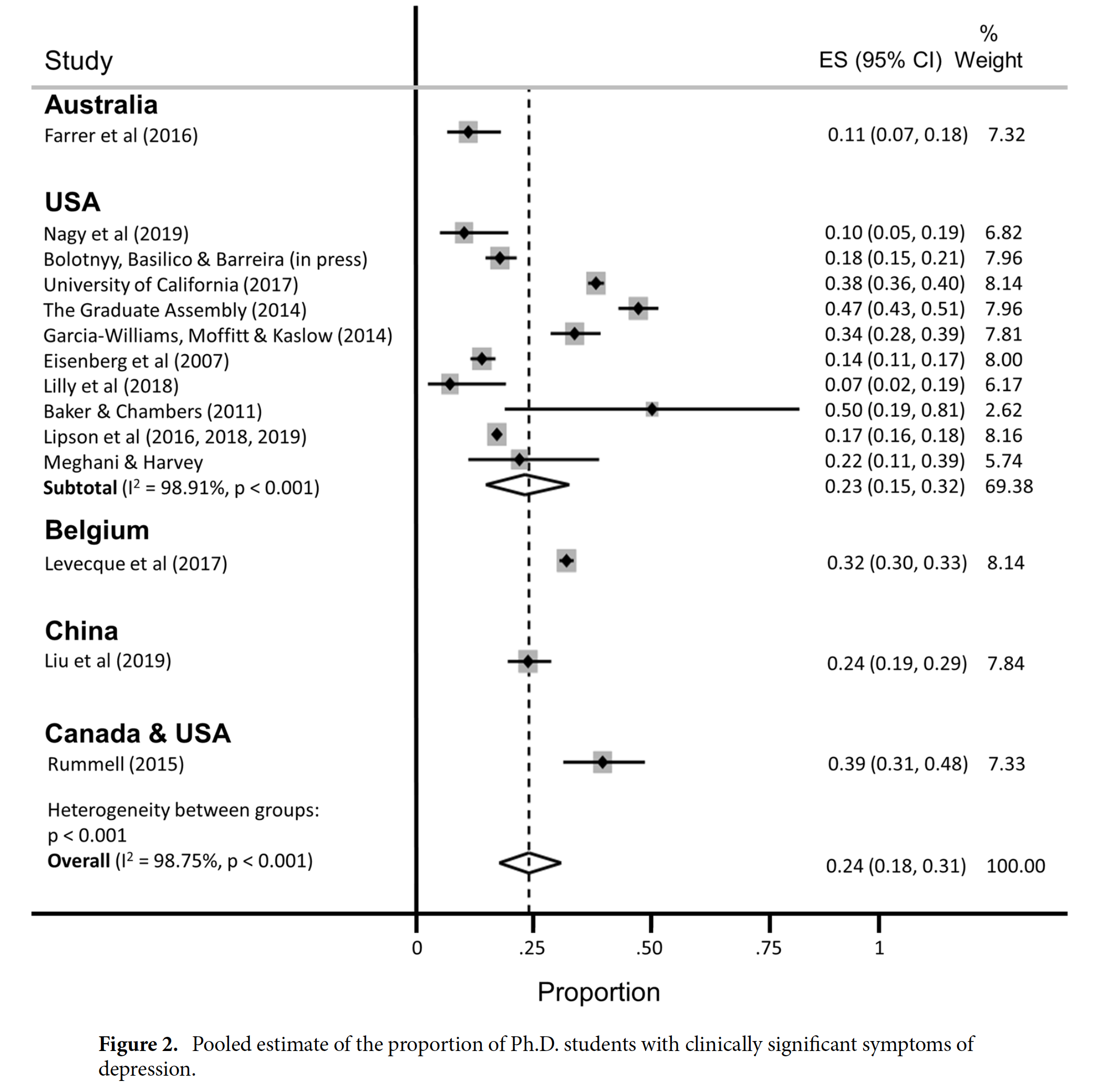
Forthcoming. Handbook of Labor, Human Resources and Population Economics at Springer.
Forthcoming. Journal of Health Economics
Abstract: This paper examines the impact of the U.S. fracking boom on local STI trans-mission rates and prostitution activity as measured by online prostitution reviewcounts. We first document significant and robust positive effects on gonorrhea ratesin fracking counties at the national level. But we find no evidence that frackingincreases prostitution when using our national data, suggesting sex work may notbe the principal mechanism linking fracking to gonorrhea growth. To explore mech-anisms, we then focus on remote, high-fracking production areas that experiencedlarge increases in sex ratios due to male in-migration. For this restricted sample wefind enhanced gonorrhea transmission effects and moderate evidence of extensivemargin effects on prostitution markets. This study highlights public health con-cerns relating to economic shocks and occupational conditions that alter the localdemographic composition.
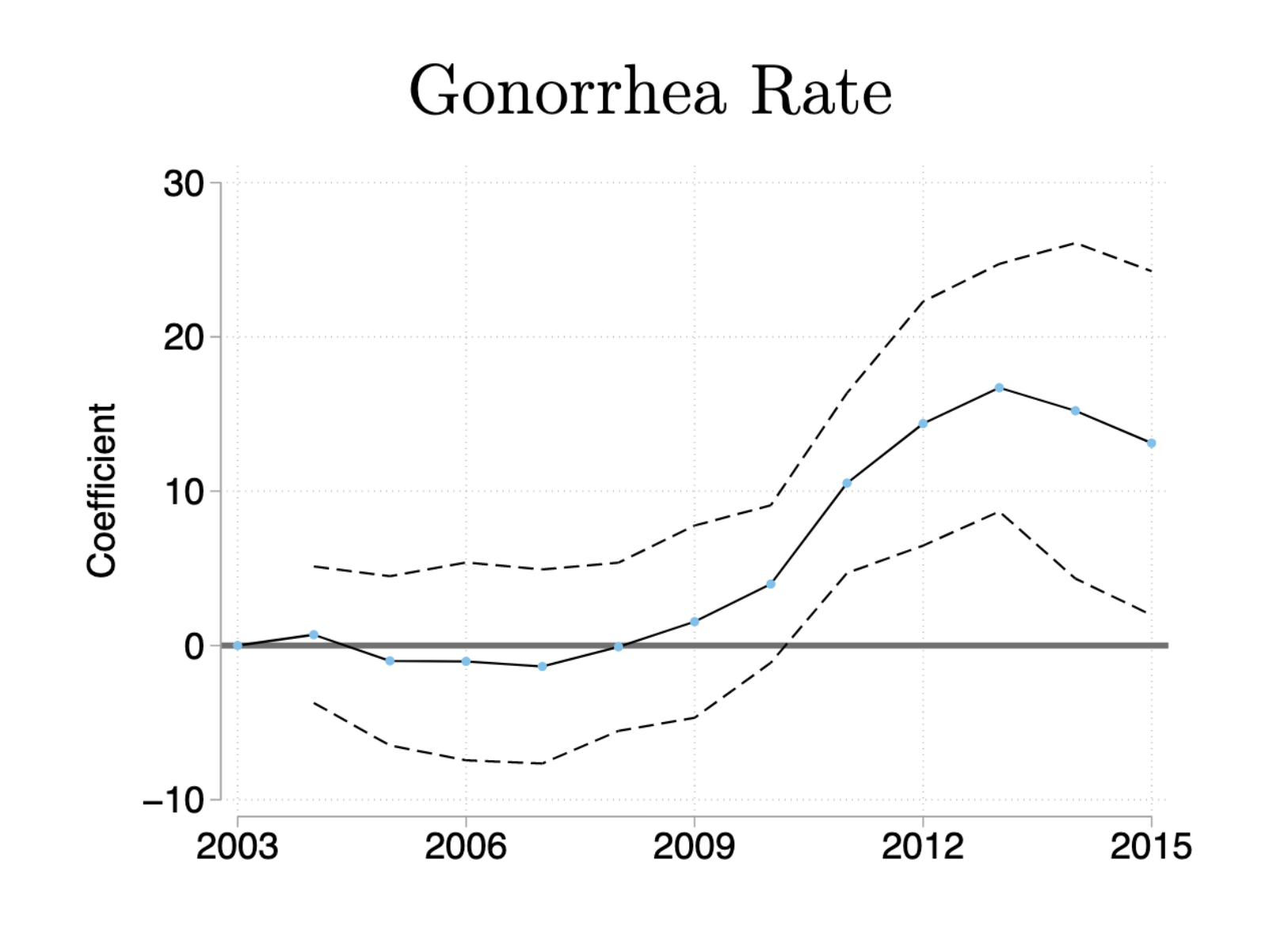
2019. Journal of Public Economics
Abstract: Warrantless domestic violence arrest laws allow officers to make arrests of alleged offenders of domestic violence without warrants given probable cause. Existing literature classifies these laws into three groups based on the degree of arrest authority given to officers: discretionary, preferred, and mandatory. Using our updating of each type of warrantless domestic violence arrest law, we examine the causal effect of these laws on intimate partner homicides using differences-in-differences. In contrast to Iyengar (2009), we find no evidence that mandatory arrest laws, which remove officer discretion by making arrest a required action, increased intimate partner homicides. Instead, we find some evidence that discretionary arrest statutes, which allowed officer discretion to make arrests, decreased current and former spousal homicides.
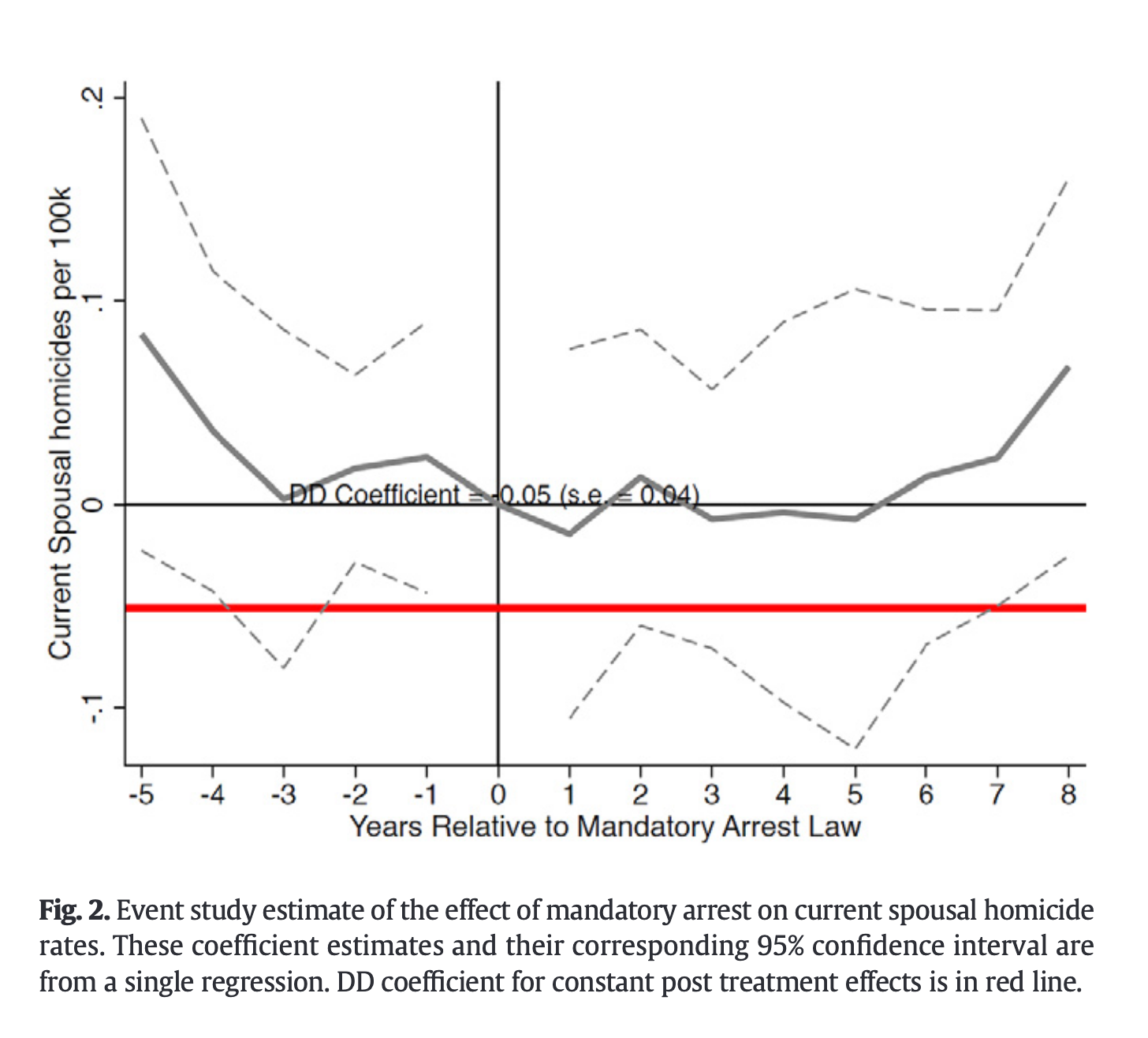
2019. Journal of Human Resources
Abstract: We document the effects of abortion-clinic closures on clinic access, abortions, and births using variation generated by a law that shuttered nearly half of Texas' clinics. We find substantial and non-linear effects of travel distance on abortion rates: an increase in travel distance from 0-50 miles to 50-100 miles reduces abortion rates by 16 percent, and that the effects of increasing distance are smaller when the nearest clinic is already more than 50 miles away. We also demonstrate the importance of congestion with a proxy capturing effects of closures which have little impact on distance but which reduce clinics per-capita.
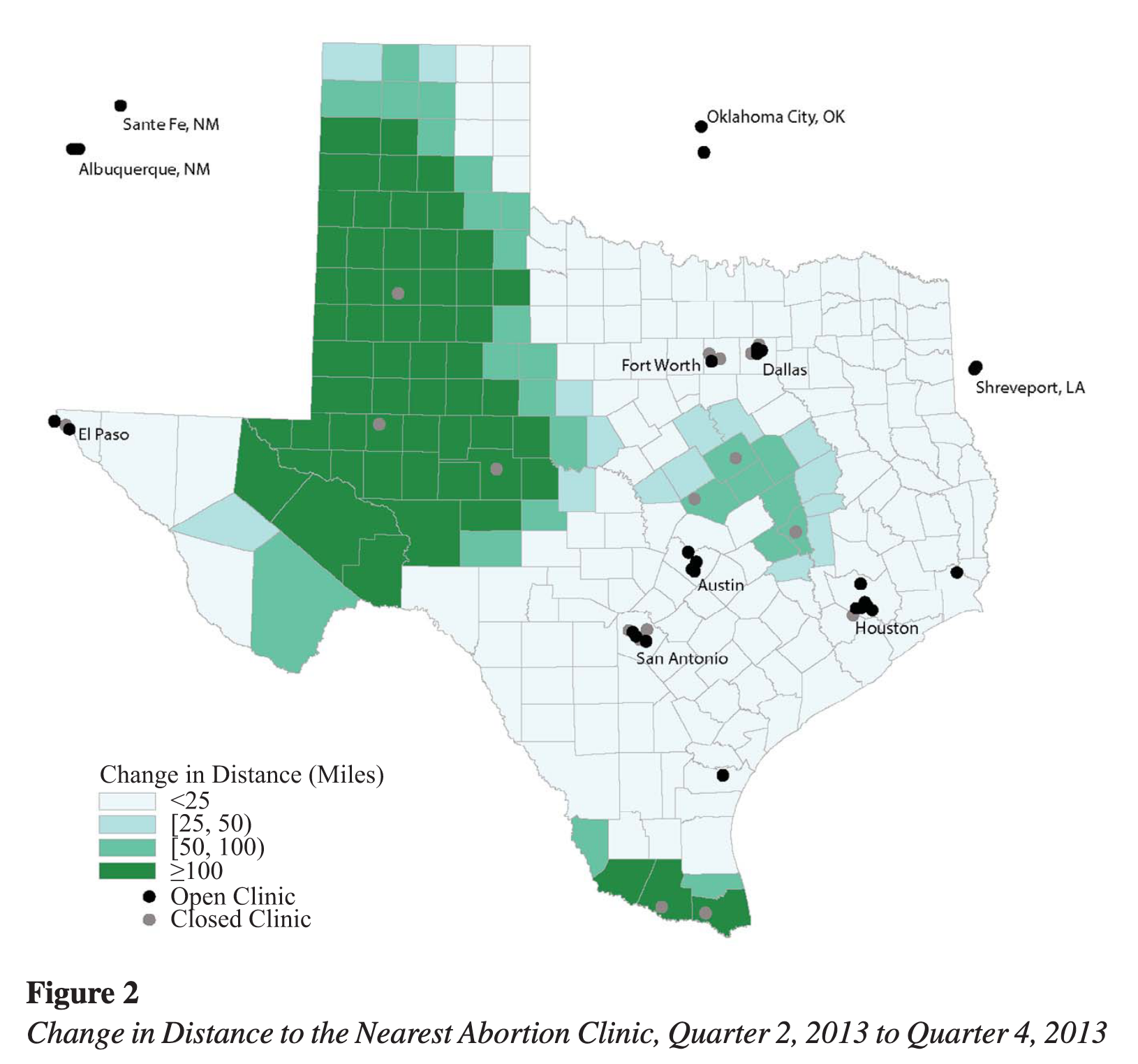
2018. Review of Economic Studies
Abstract: Most governments in the world, including the U.S., prohibit sex work. Given these types of laws rarely change and are fairly uniform across regions, our knowledge about the impact of decriminalizing sex work is largely conjectural. We exploit the fact that a Rhode Island District Court judge unexpectedly decriminalized indoor sex work to provide causal estimates of the impact of decriminalization on the composition of the sex market, reported rape offences, and sexually transmitted infections. While decriminalization increases the size of the indoor sex market, reported rape offences fall by 30% and female gonorrhoea incidence declines by over 40%.
Media Coverage:
Vox
,
WaPo
,
Advocate
,
Slate
,
The Week
,
LA Weekly
,
Daily Mail
,
National Post
,
The Globe and the Mail
,
Reason
,
NPR
,
Quartz
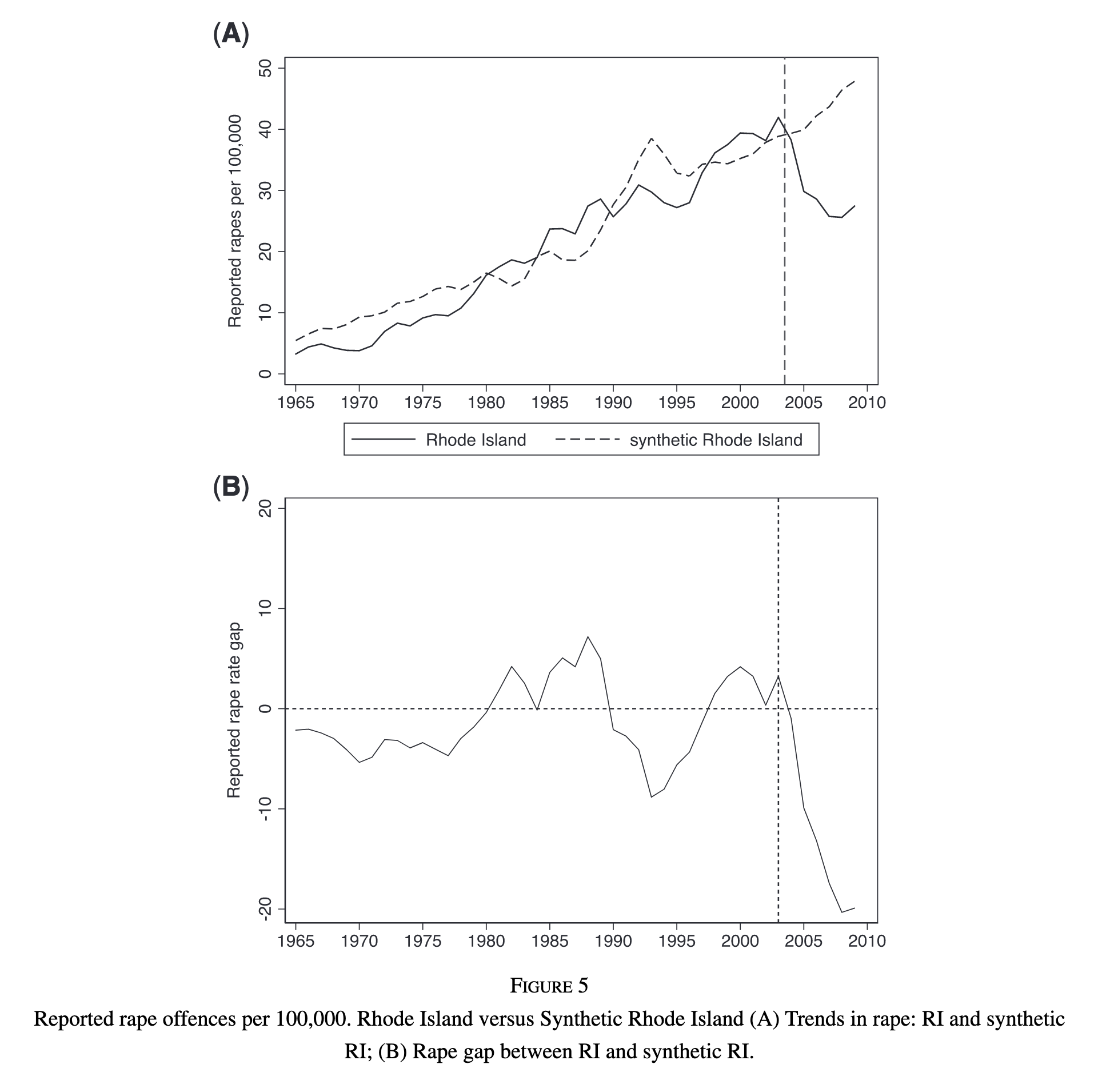
2017. Review of Economics of the Household. (2010 version)
Abstract: We analyze the relationship between education and criminal behavior based ona survey of nearly 700 North American female escorts who provide (typically illegal)prostitution services. Nearly 40% of the women in our sample report college comple-tion. College-educated women are less likely to see clients in any given week and donot earn higher average hourly wages. However, conditional on seeing any clients,college-educated prostitutes see more clients and provide longer client sessions. Wedemonstrate that these results are consistent with a model in which college-educatedprostitutes have better outside options to prostitution, but are also able to reducethe marginal disutility of prostitution work by attracting fewer unpleasant clientsand by combining sexual services with non-sexual services such as companionship,where college education may be productive.
Media coverage:
The Economist
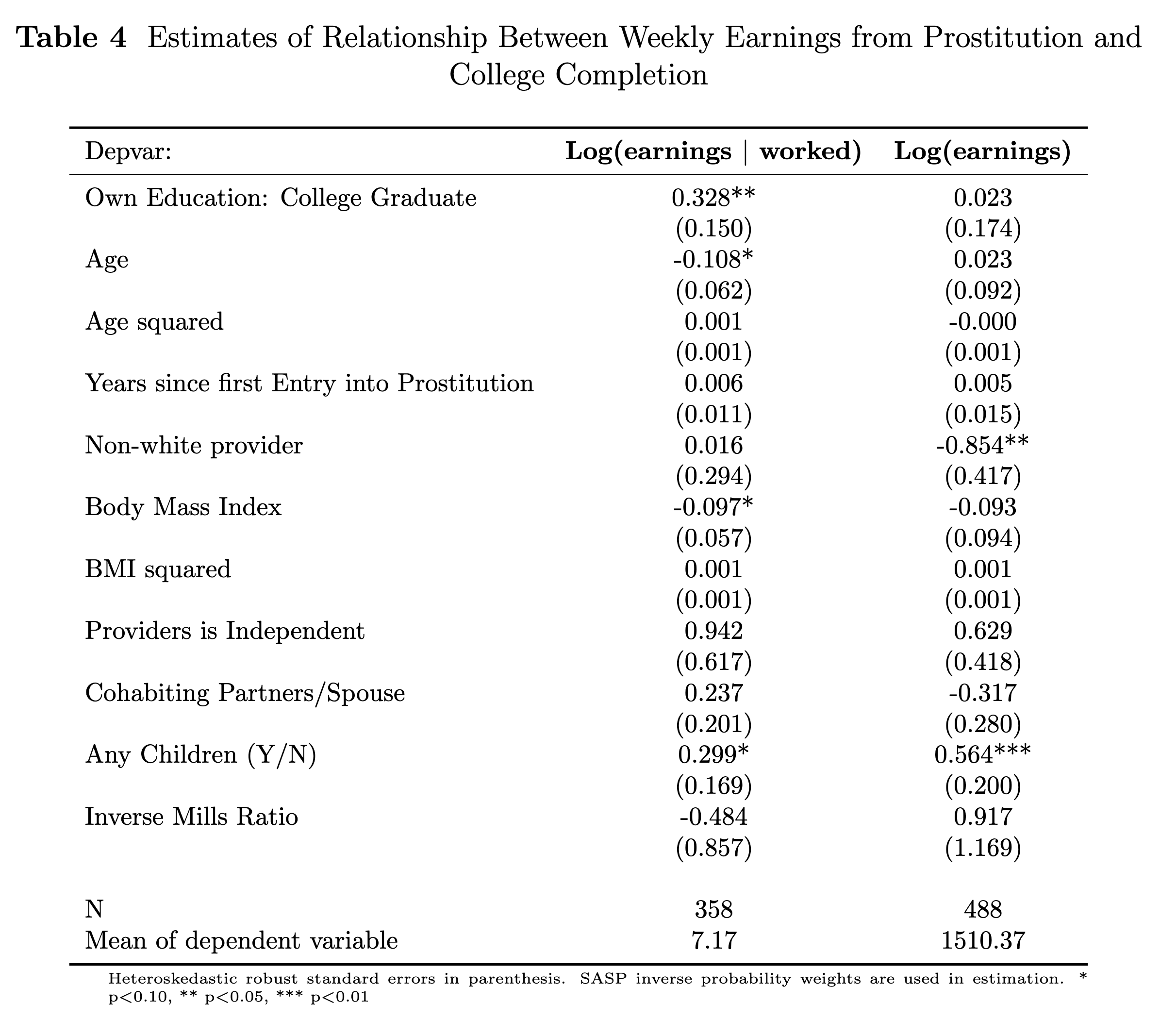
2017. Journal of Anxiety Disorders
Abstract: Health anxiety is commonly seen in medical clinics and is related to the overutilization of primary care services, but existing studies have not yet considered the possible moderating effect of age. We examined if age moderated the association between health anxiety and medical utilization. A secondary aim was to examine potential racial/ethnic differences in health anxiety. An ethnoracially diverse group of patients (N = 533) seeking treatment from a primary care clinic completed a self-report measure of health anxiety. Three indices of medical utilization were assessed using medical records, including the number of: (a) clinic visits over the past two years, (b) current medications, and (c) lab tests over the past two years. Age moderated the effect of health anxiety on multiple indices of medical utilization. Supplemental analyses found that the moderating effect of age was specific to a somatic/body preoccupation, rather than health worry, dimension of health anxiety. Mean-level differences in health anxiety were either not supported (health anxiety composite, somatic/body preoccupation) or were small in magnitude (health worry) among self-identifying Black, Latino, and White participants. Results indicate that assessing for health anxiety could be particularly important for older adult patients who frequently seek out medical services.
2016. The Handbook of the Economics of Prostitution (ed. Scott Cunningham and Manisha Shah), Oxford University Press.
Abstract: Seller reputation can incentivize the fulfillment of contractual obligations and the provision of noncontractible services if buyers have lower willingness to pay for products offered by sellers with poor reputations. For this reason, reputational mechanisms can substitute for court enforcement of contracts, when court enforcement is costly or unavailable, and more generally can improve sellers’ behavior toward buyers. This Chapter examines the market for professional escorts, a high-quality segment of the market for prostitution. Since prostitution is illegal in most US locations, court enforcement of contracts between buyers and sellers is problematic. We examine how the diffusion of websites that allow escort customers to share information with each other has created an important reputational mechanism where only weak measures of reputation were previously available. We show that the diffusion of one well-known website appears to correlate with a trend toward better escort behavior toward buyers. Welfare implications of this reputational mechanism are, however, ambiguous, since it likely expands the market for prostitution, potentially generating negative externalities.

2016. Southern Economic Journal
Abstract: Video games are an increasingly popular leisure activity. As many best‐selling games contain hyper‐realistic violence, many researchers and policymakers have hypothesized that violent games cause violent behaviors. Laboratory experiments have found evidence suggesting that violent video games increase aggression. Before drawing policy conclusions about the effect of violent games on actual behavior, these experimental studies should be subjected to tests of external validity. Our study uses a quasi‐experimental methodology to identify the short‐run and medium‐run effects of violent game sales on violent crime using time variation in retail unit sales data of the top 30 selling video games and violent criminal offenses from both the Uniform Crime Report and the National Incident‐Based Reporting System from 2005 to 2011. We find no evidence of an increase in crime associated with video games and perhaps a decrease.
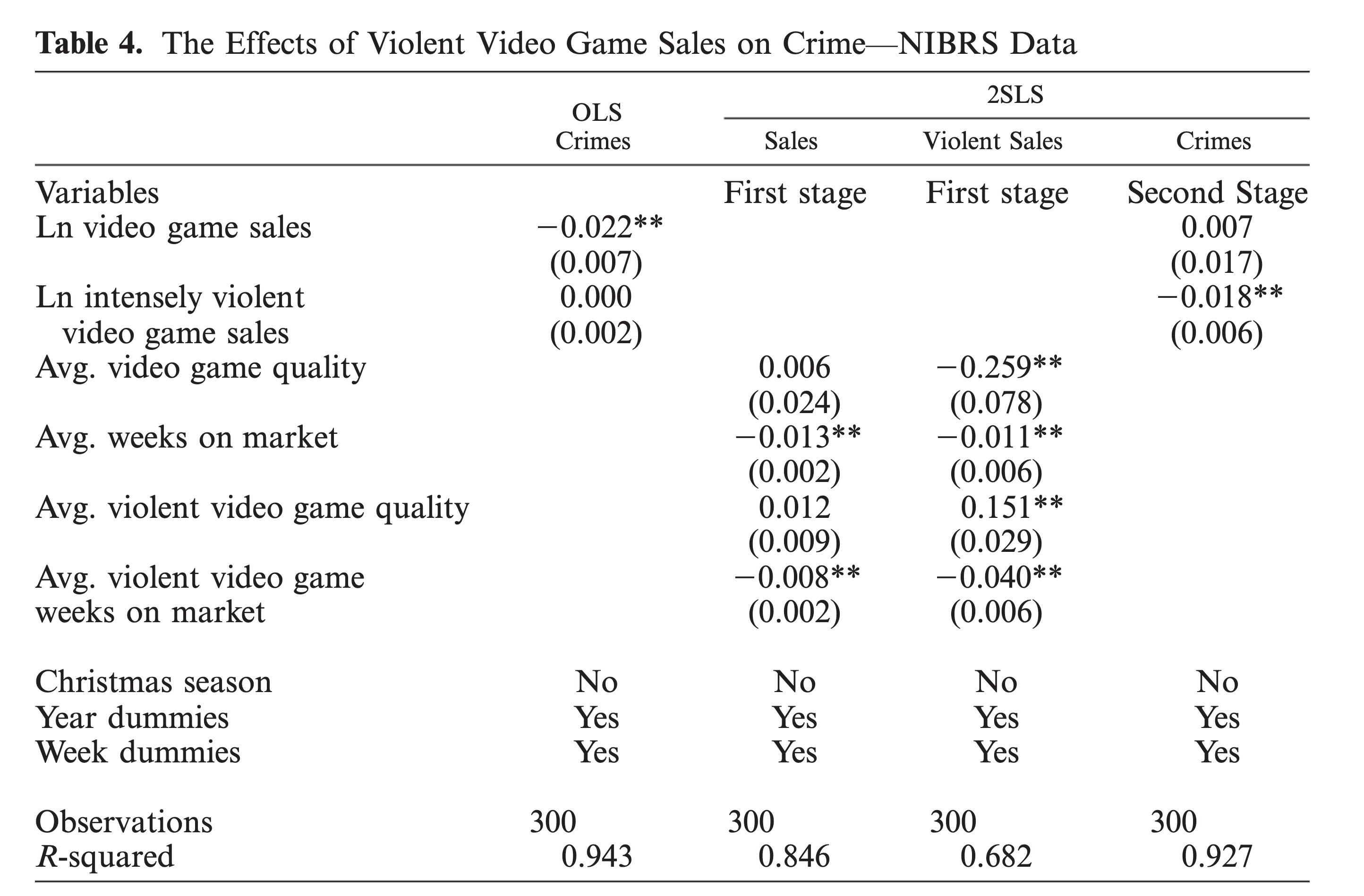
2015. International Journal of Drug Policy
Abstract: In 2010, Mississippi became the second state to require a prescription to purchase pseudoephedrine-based medications. Proponents of “prescription-only” laws argue that theyare necessary to disrupt methamphetamine markets, but critics note the costs to legal consumersof cold medications may offset some of the laws’ intended benefits. We evaluated the effect of prescription-only restrictions for methamphetamine precursorson state-level methamphetamine lab seizures and methamphetamine prices. We used a synthetic control approach to create a control state comparable to Mississippiand then used permutation testing to determine if the resulting difference was statisticallysignificant. We found that Mississippi’s prescription-only law removed 2,291 small methamphetaminelabs in the two years after enactment, which represents a 65% reduction in small labs relative tothe synthetic counterfactual. We found no evidence that the law impacted methamphetamineprices. We conclude that while prescription-only laws can reduce the number of domesticsmall methamphetamine labs in operation, methamphetamine use is not likely to be materiallyimpacted as production may shift out of state
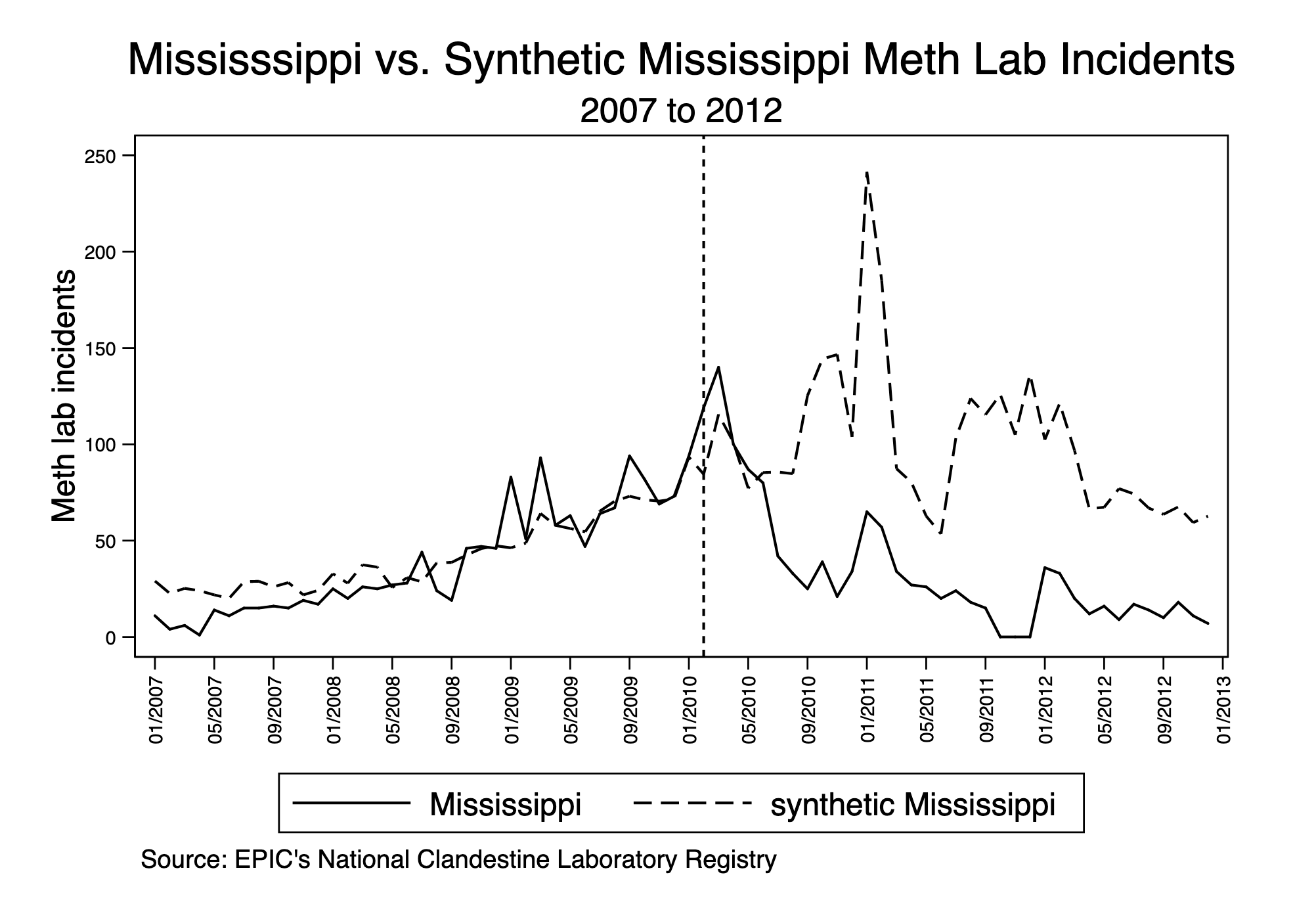
2015. PLoS-One
Abstract: Restrictions on retail purchases of pseudoephedrine are one regulatory approach to reduce the social costs of methamphetamine production and use, but may impose costs on legitimate users of nasal decongestants. This is the first study to evaluate the costs of restricting access to medications on consumer welfare. Our objective was to measure the inconvenience cost consumers place on restrictions for cold medication purchases including identification requirements, purchase limits, over-the-counter availability, prescription requirements, and the active ingredient. We conducted a contingent choice experiment with Amazon Mechanical Turk workers that presented participants with randomized, hypothetical product prices and combinations of restrictions that reflect the range of public policies. We used a conditional logit model to calculate willingness-to-accept each restriction. Respondents' willingness-to-accept prescription requirements was $14.17 ($9.76-$18.58) and behind-the-counter restrictions was $9.68 ($7.03-$12.33) per box of pseudoephedrine product. Participants were willing to pay $4.09 ($1.66-$6.52) per box to purchase pseudoephedrine-based products over phenylephrine-based products. Restricting access to medicines as a means of reducing the social costs of non-medical use can imply large inconvenience costs for legitimate consumers. These results are relevant to discussions of retail access restrictions on other medications.
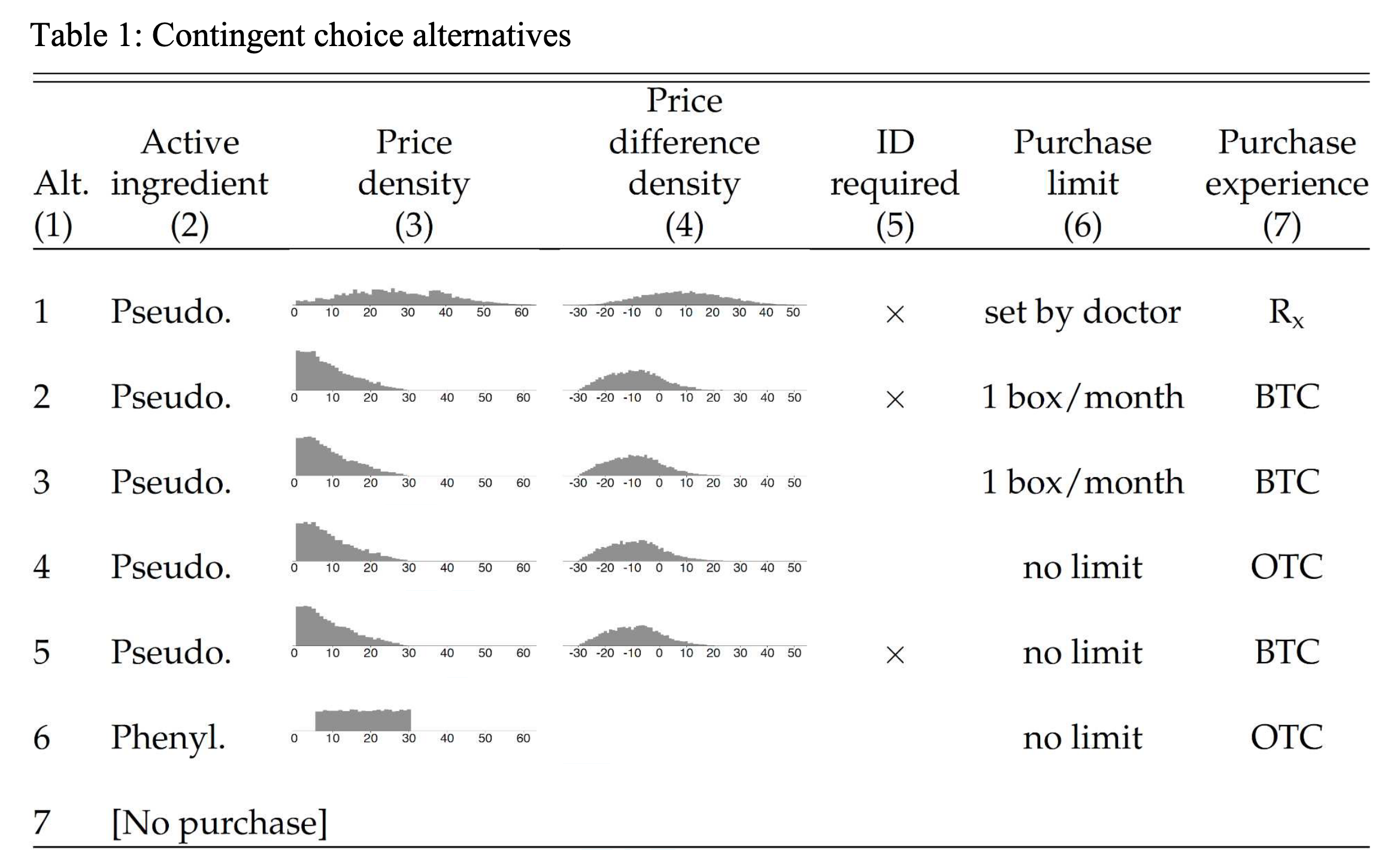
2016. Health Economics
Abstract: Successful supply‐side interdictions into illegal drug markets are predicated on the responsiveness of drug prices to enforcement and the price elasticity of demand for addictive drugs. We present causal estimates that targeted interventions aimed at methamphetamine input markets (‘precursor control’) can temporarily increase retail street prices, but methamphetamine consumption is weakly responsive to higher drug prices. After the supply interventions, purity‐adjusted prices increased then quickly returned to pre‐treatment levels within 6–12 months, demonstrating the short‐term effects of precursor control. The price elasticity of methamphetamine demand is −0.13 to −0.21 for self‐admitted drug treatment admissions and between −0.24 and −0.28 for hospital inpatient admissions. We find some evidence of a positive cross‐price effect for cocaine, but we do not find robust evidence that increases in methamphetamine prices increased heroin, alcohol, or marijuana drug use. This study can inform policy discussions regarding other synthesized drugs, including illicit use of pharmaceuticals.
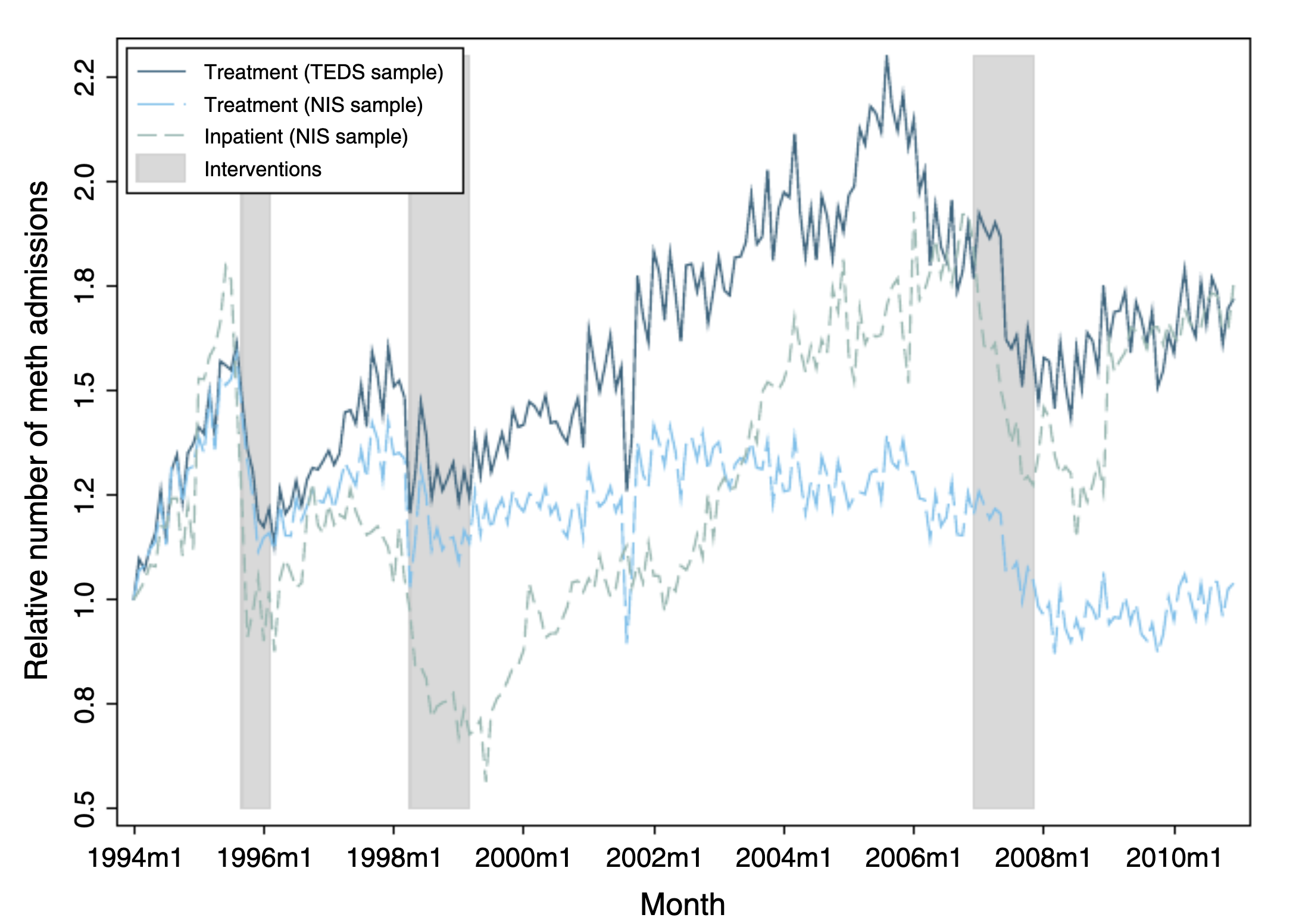
2014. Iowa Law Review Bulletin
2012. American Law and Economics Review
Abstract: There is a growing literature on the effects of abortion legalization on a range of fertility outcomes. The now-famous paper by Donohue and Levitt (2001), linking abortion to the decline in crime in the 1990s, has shifted the focus to non-fertility outcomes. We focus on STIs, specifically gonorrhea, exploiting the states that legalized abortion prior to Roe v. Wadeas a quasi-experiment. Using data from the CDC, we present difference-in-difference estimates showing gonorrhea incidence fell among 15–19-year-olds in early-repeal states 15–19 years after legalization. The effects aremost pronounced and precisely estimated for Black women. The basic findings holdup under triple-differencing with an untreated older cohort that was notin utero during abortion repeal.
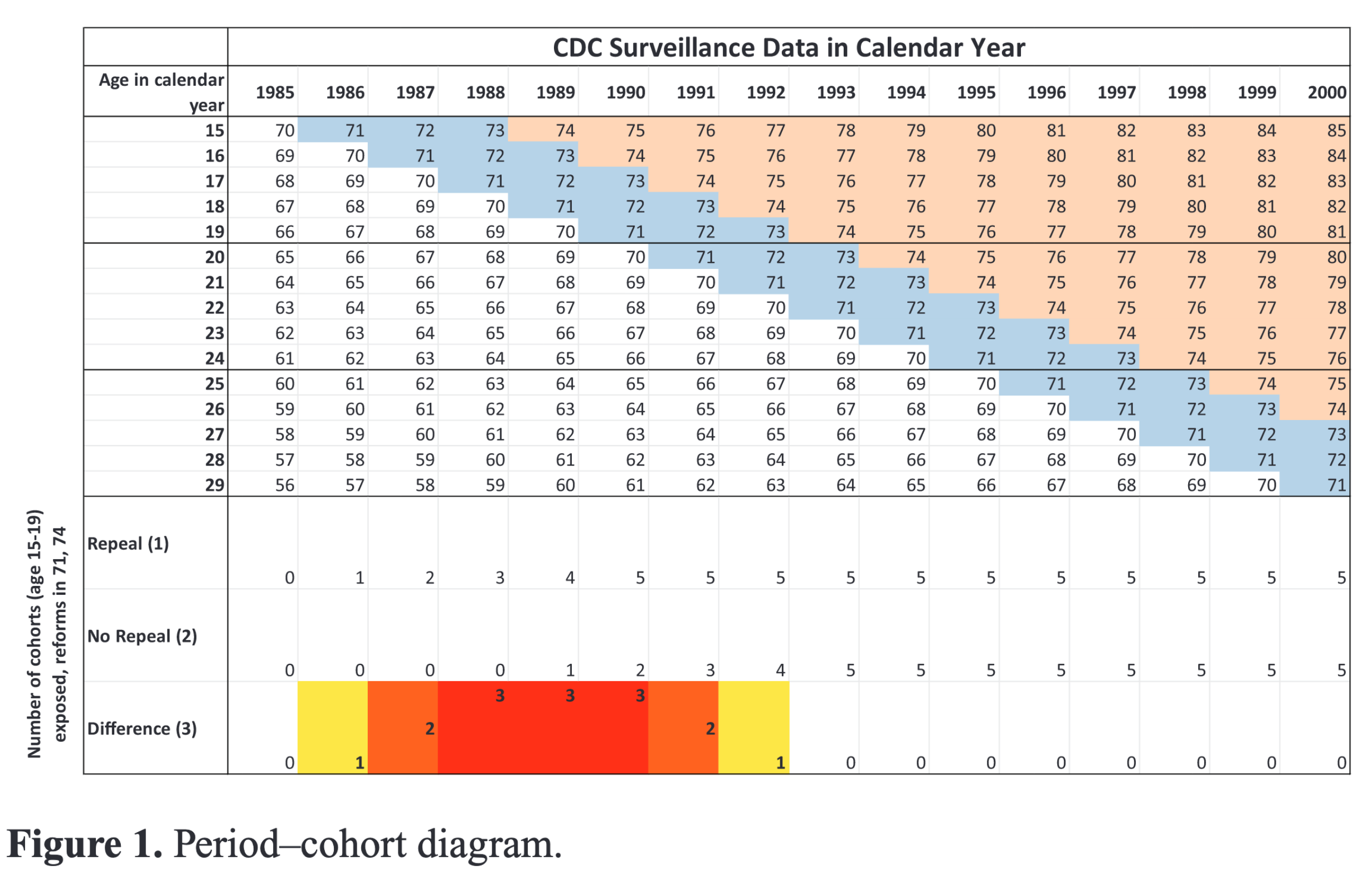
2012. Economic Inquiry
Abstract: Foster care caseloads have nearly doubled over the last three decades. Parentalmethamphetamine (meth) use grew significantly during the same period. While childwelfare workers and law enforcement claim that parental meth use contributes tofoster care growth, the evidence for a causal effect has not been determined. Thispaper presents the first evidence of a causal effect of meth on foster care admissionsusing two exogenous supply-side interventions in meth markets from the late 1990sfor identification. First, we find that restrictions on meth precursor distribution causedmeth use (proxied by white meth self-referred treatment cases) to decline 4.1%. Second,using two-stage least squares, we estimate a positive elasticity of foster care cases withrespect to meth use of 1.54. We also estimate elasticities of 1.03 and 1.49 for cases ofchild neglect and parental abuse, respectively. These results suggest that child welfarepolicies should be designed specifically for the children of meth-using parents.
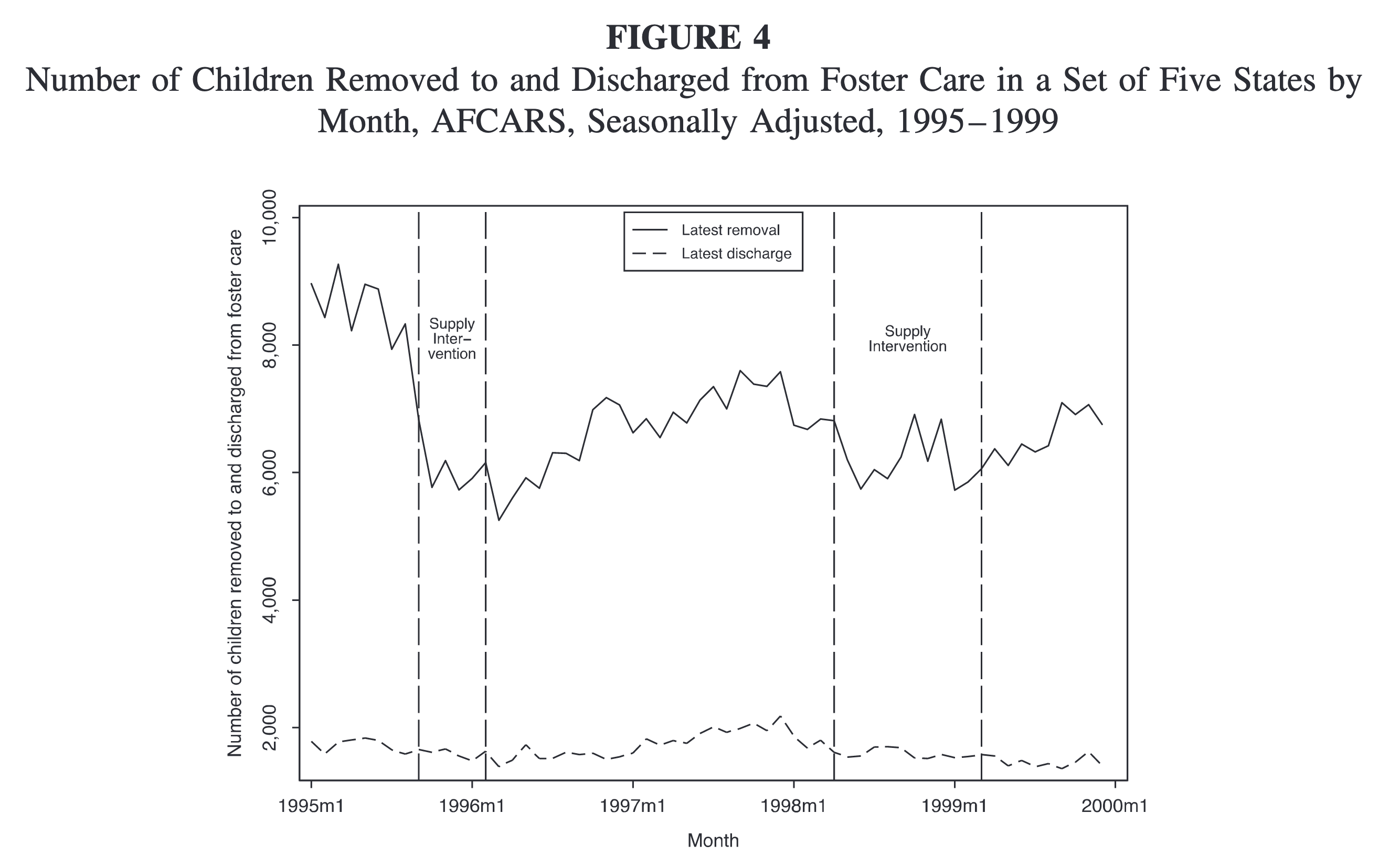
2011. Journal of Urban Economics
Abstract: The use of Internet technology for solicitation by sex workers has raised important legal and regulatory questions. We provide a description of the new institutions that facilitate prostitution online, and their potential market effects. We then supply some of the first evidence on several key parameters of interest to policymakers. First, we find that workers who solicit online largely represent growth in the overall prostitution market, as opposed to simple displacement of the off-line, street-focused market, although we find sizeable displacement effects among sex workers in their 30s and 40s. Using a newly-implemented survey, we also find that most sex workers who solicit online engage in lower-risk behaviors than traditional street-based workers; however, workers close to the margin for migration from outdoor work bring riskier business and sexual practices with them as they enter the off-street-sector.
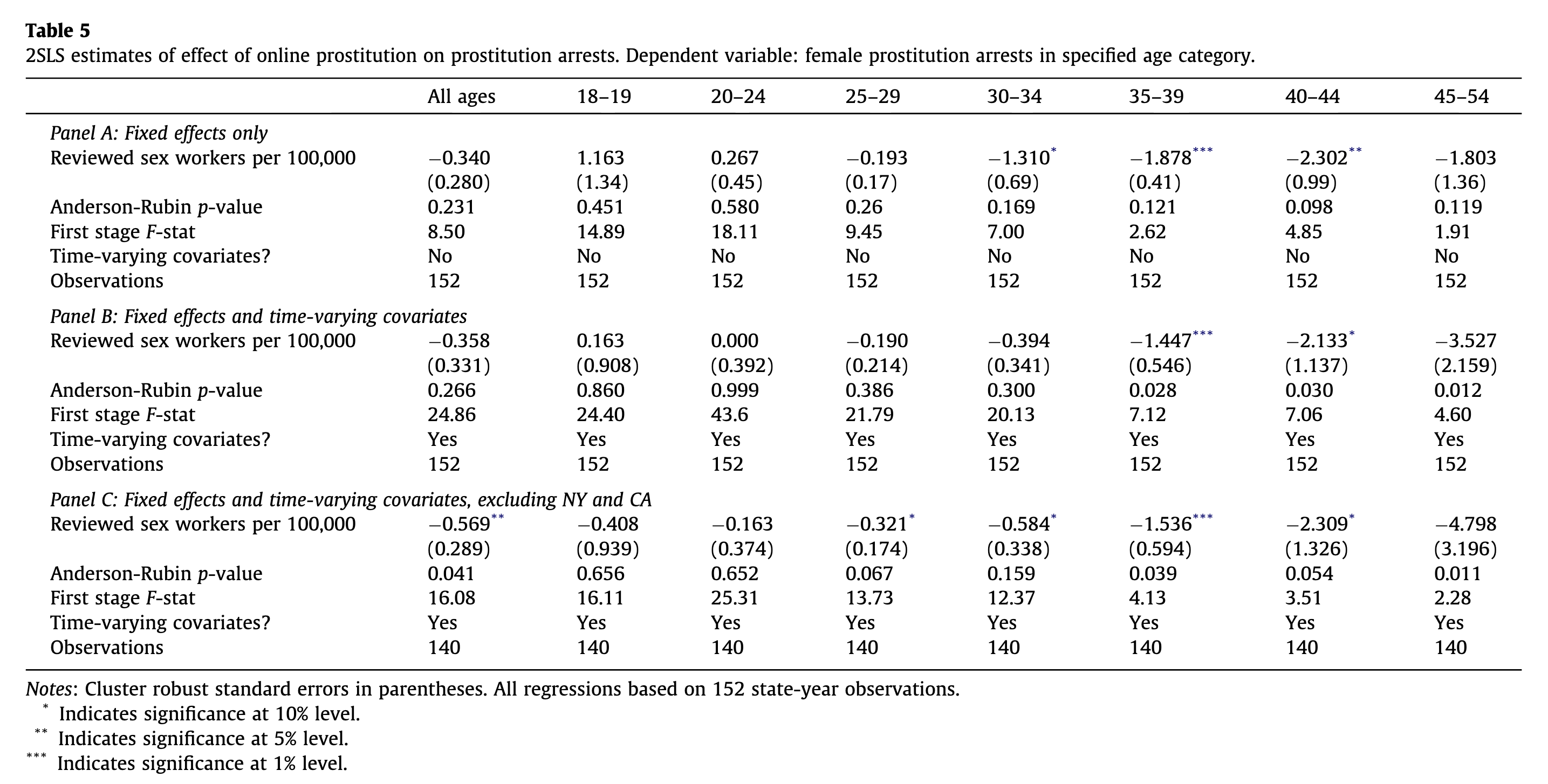
2011. The B.E. Journal of Economic Analysis & Policy
Abstract: Approximately 100,000 visitors came to Denver, Colorado and Minneapolis, Minnesota toattend the 2008 Democratic and Republican National Conventions. Economic theory suggests thatmen in transit can shift demand for commercial sex work. We estimate the responsiveness of labor supply to these two conventions, focusing on a previously neglected but increasingly important segment of the prostitution market: indoor sex workers who advertise on the Internet. Using a differences-in-differences estimator of prostitution advertisements posted on a major classified ads website, we find that the conventions caused a 29-44 percent increase in advertisements in Minneapolis and a 47-77 percent increase in Denver. Given the key role prostitution plays in the transmission of STIs, these results imply that focusing public health resources on men in transitmay be beneficial.
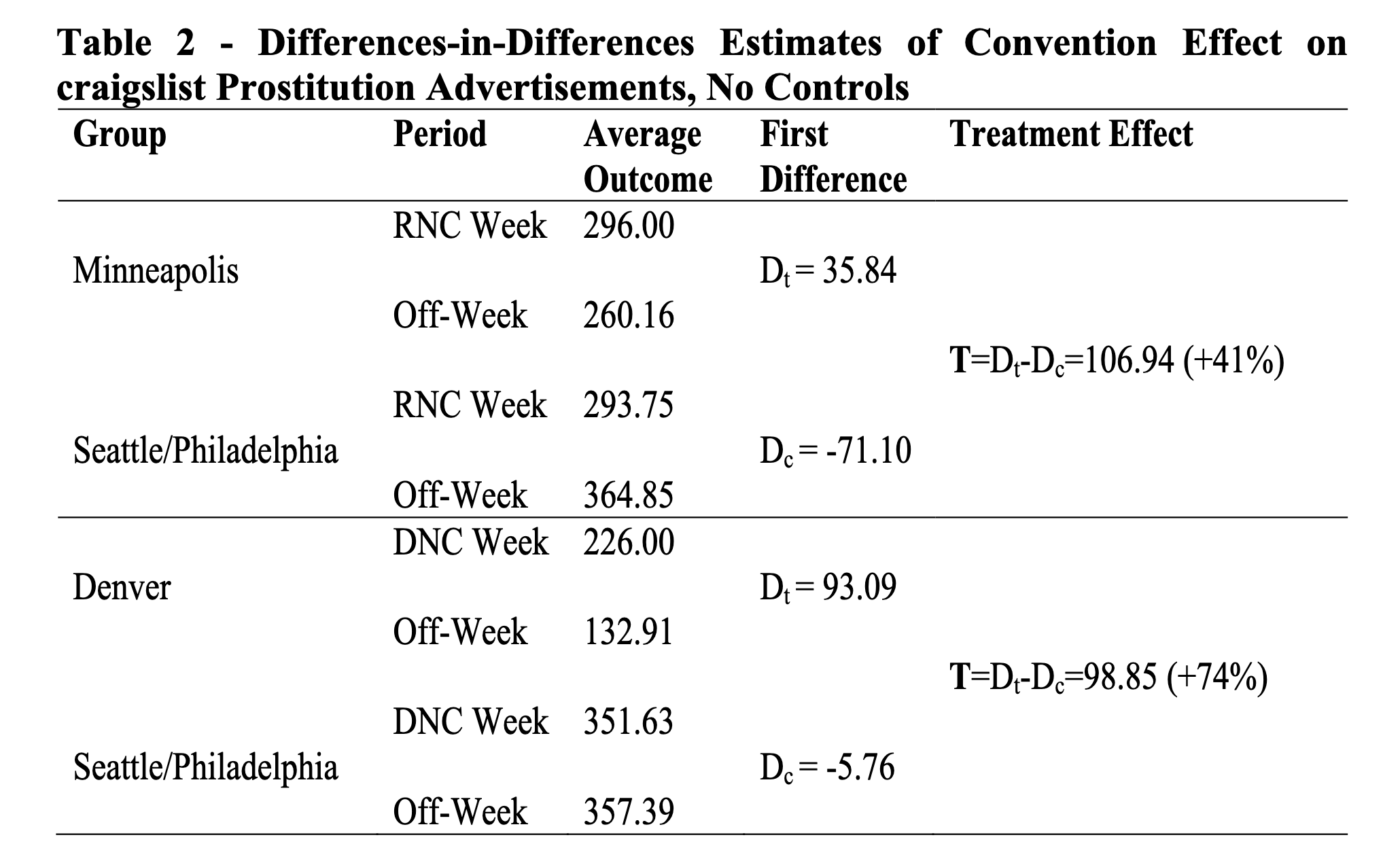
2011. Research Handbook in the Law and Economics of the Family, edited by Lloyd R. Cohen and
Joshua D. Wright, Edward Elgar Publishing Limited.
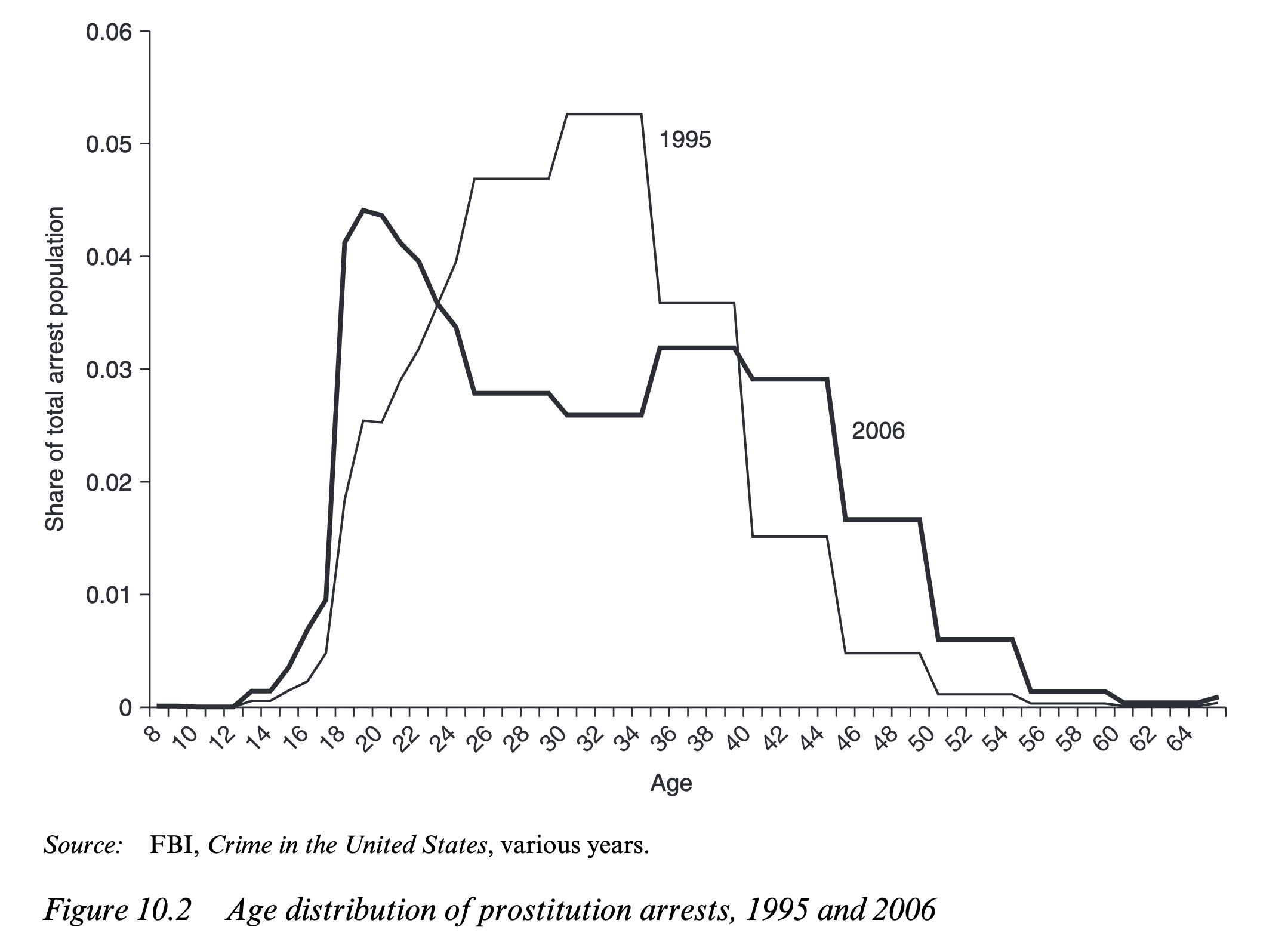
2010. Sexually Transmitted Infections
Abstract: Sex workers have historically played a central role in STI outbreaks by forming a core group for transmission and due to their higher rates of concurrency and inconsistent condom usage. Over the past 15 years, North American commercial sex markets have been radically reorganised by internet technologies that channelled a sizeable share of the marketplace online. These changes may have had a meaningful impact on the role that sex workers play in STI epidemics. In this study, two new datasets documenting the characteristics and practices of internet-facilitated sex workers are presented and analysed. The first dataset comes from a ratings website where clients share detailed information on over 94 000 sex workers in over 40 cities between 1999 and 2008. The second dataset reflects a year-long field survey of 685 sex workers who advertise online. Evidence from these datasets suggests that internet-facilitated sex workers are dissimilar from the street-based workers who largely populated the marketplace in earlier eras. Differences in characteristics and practices were found which suggest a lower potential for the spread of STIs among internet-facilitated sex workers. The internet-facilitated population appears to include a high proportion of sex workers who are well-educated, hold health insurance and operate only part time. They also engage in relatively low levels of risky sexual practices.
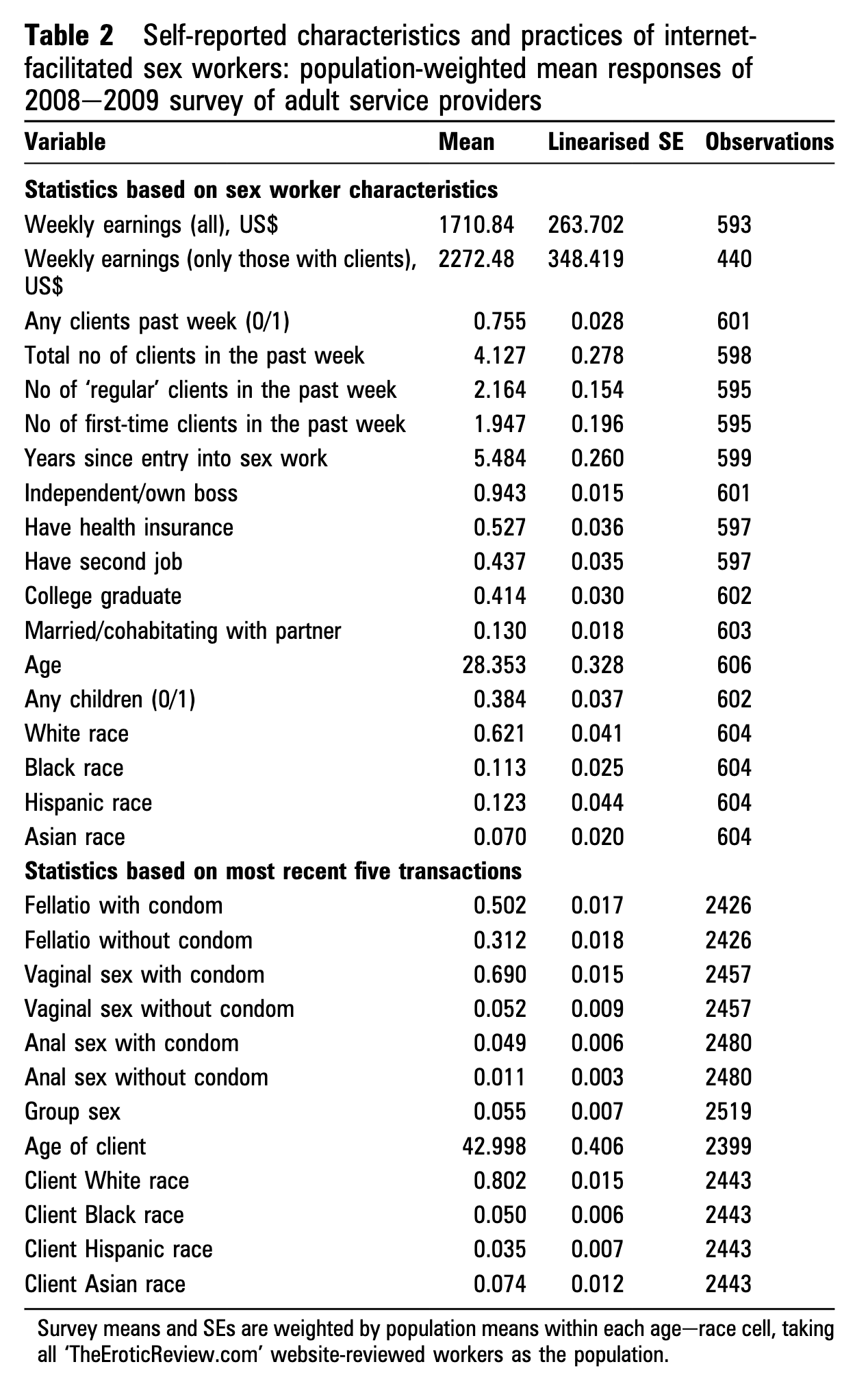
Books
2016. Oxford University Press
2021. Yale University Press